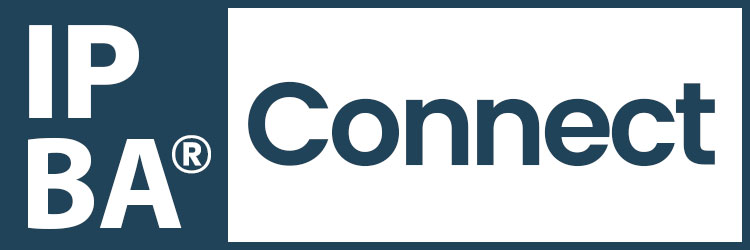
In today’s fiercely competitive global landscape, a company’s intellectual property👉 Creations of the mind protected by legal rights. (IP) stands as a cornerstone of its value, innovation👉 Practical application of new ideas to create value., and market differentiation. Patents protect groundbreaking inventions👉 A novel method, process or product that is original and useful., trademarks build brand👉 A distinctive identity that differentiates a product, service, or entity. recognition and trust, copyrights safeguard creative expressions, and trade secrets offer a competitive edge through confidential knowledge. However, the safeguarding and strategic management👉 Strategic management is the process of planning, implementing, and evaluating. of those intangible yet invaluable assets are inextricably linked to the human element within an organization. This is where Human Resources (HR) plays a pivotal, often underestimated, role. HR professionals are not merely administrators of personnel; they are frontline defenders and strategic enablers in the complex arena of IP protection.
The relationship between IP and HR is multifaceted, presenting a unique set of challenges that demand proactive attention and well-defined strategies. Failing to address these challenges can expose an organization to significant risks, ranging from the loss of valuable IP to costly legal battles and reputational damage. Conversely, a well-informed and strategically aligned HR function can be instrumental in fostering a culture of IP awareness, mitigating risks associated with employee actions, and ultimately contributing to the long-term success of the organization.
This comprehensive overview explores the main IP challenges that HR professionals must navigate, providing a detailed understanding of the complexities involved and highlighting the crucial role HR plays in safeguarding a company’s intellectual assets.
The Thorny Issue of Ownership: Defining Who Owns Employee-Created IP
One of the foundational IP challenges for HR lies in clearly establishing and legally securing the ownership of intellectual property created by employees during their tenure. This issue is far from straightforward and can become a significant point of contention if not addressed proactively from the outset of the employment relationship.
The Nuances of Invention and Creation: Employees, in the course of their daily tasks and project work, often conceive of inventions, develop software code, design new products, or create marketing materials. The question then arises: who legally owns these creations? Without clear guidelines, the default position can vary depending on jurisdiction and the specific nature of the IP.
The Imperative of Employment Agreements: The cornerstone of addressing this challenge lies in the implementation of clear and comprehensive employment agreements. These legally binding documents must include explicit IP assignment clauses. Such clauses should unequivocally state that any intellectual property conceived, developed, or created by the employee, individually or jointly with others, during their employment and within the scope of their job responsibilities, belongs exclusively to the company. The language used in these clauses must be precise and unambiguous to avoid future disputes.
Understanding the “Work-for-Hire” Doctrine: In the realm of copyright👉 A legal protection for original works, granting creators exclusive rights. law, the “work-for-hire” doctrine offers a degree of clarity regarding the ownership of copyrightable works, such as software code, written documents, and artistic creations, developed by employees within the scope of their employment. Under this doctrine, the employer is generally considered the legal author and owner of the copyright. However, HR professionals must understand the specific requirements and limitations of this doctrine, as it may not automatically apply to all types of creative work, especially those falling outside the strict definition of employment duties.
The Distinct Case of Independent Contractors: The rules governing IP ownership for independent contractors differ significantly from those for employees. Unlike the “work-for-hire” doctrine, ownership of IP created by contractors typically resides with the contractor unless explicitly transferred through a written agreement. Therefore, HR, in collaboration with legal teams, must ensure that all contracts with independent contractors who will be creating IP for the company include clear IP assignment clauses, mirroring the intent and effect of those in employment agreements. Failing to secure these assignments can lead to the company lacking ownership rights over crucial IP developed by external parties.
Fortifying the Vault: Protecting Trade Secrets and Confidential Information
Beyond formally establishing IP ownership, a critical challenge for HR is the proactive protection of trade secrets and other confidential information that provide a company with a competitive edge. The loss or unauthorized disclosure of such information can have severe financial and strategic repercussions.
Defining the Boundaries of Confidentiality: The first step in effective protection is to clearly define what constitutes a trade secret👉 Protects confidential business info for competitive advantage. and confidential information within the organization. This requires collaboration between HR, legal counsel, and technical experts to identify sensitive data such as formulas, manufacturing processes, customer lists, pricing strategies, marketing plans, and unpublished research findings. Once identified, these categories of information should be clearly documented and communicated to employees.
The Shield of Confidentiality Agreements (NDAs): Non-Disclosure Agreements (NDAs), also known as confidentiality agreements, are indispensable tools in safeguarding trade secrets. HR is responsible for implementing NDAs for all employees, particularly those who will have access to sensitive information as part of their roles. These agreements should explicitly outline what constitutes confidential information, the employee’s obligations to maintain its secrecy both during and after their employment, and the potential consequences of unauthorized disclosure. The scope and duration of these agreements should be carefully considered and tailored to the specific roles and the nature of the information involved.
Cultivating a Culture of Confidentiality Through Training: Legal agreements alone are insufficient. HR plays a vital role in fostering a culture of confidentiality within the organization through comprehensive and regular employee training programs. These programs should educate employees on the importance of protecting trade secrets and confidential information, providing practical guidance on the proper handling of sensitive documents, secure data practices, restrictions on discussing confidential matters internally and externally, and the implications of breaches in confidentiality.
The Crucial Role of Exit Interviews: As employees depart the organization, the risk👉 The probability of adverse outcomes due to uncertainty in future events. of inadvertent or intentional disclosure of confidential information increases. Exit interviews provide a critical opportunity for HR to remind departing employees of their ongoing confidentiality obligations as stipulated in their employment agreements and NDAs. Furthermore, HR should ensure the return of all company property, including documents, electronic devices, and any other materials containing confidential information.
Navigating the Currents of Departure: Mitigating the Risk of IP Misappropriation
The departure of employees, particularly those in key roles or with access to sensitive IP, presents a significant challenge in preventing potential misappropriation. HR must implement proactive measures to mitigate this risk.
The Complexities of Lateral Hires: Hiring employees from competitor organizations can be a strategic move to acquire talent and expertise. However, it also carries the inherent risk of the new employee inadvertently or intentionally bringing with them trade secrets or confidential information from their former employer. HR needs to establish robust onboarding procedures that explicitly address this risk, including training new hires on the importance of respecting the IP rights of their former employers and clearly outlining the company’s policies against using or disclosing such information.
The Importance of Enforcement: Despite preventative measures, instances of IP misappropriation may occur. HR needs to be aware of the legal options available to the company in such situations and work closely with a legal counsel to investigate and take appropriate action, which may include legal proceedings to recover stolen IP and seek damages. A clear understanding of the legal framework and the company’s willingness to enforce its IP rights can act as a deterrent.
Building a Foundation of Knowledge: Fostering Training and Awareness
A proactive approach to IP protection requires a workforce that understands the significance of IP and their individual responsibilities in safeguarding it. HR is central to building this foundation through comprehensive training and awareness initiatives.
Communicating IP Policies Effectively: HR is responsible for clearly communicating the company’s IP policies to all employees. These policies should outline the company’s stance on IP ownership, the protection of confidential information, and the responsibilities of employees in these areas. The policies should be easily accessible, regularly reviewed, and communicated through various channels, including onboarding materials, internal communications, and dedicated training sessions.
Demystifying IP: Training programs should educate employees on the different types of IP – patents, trademarks, copyrights, and trade secrets – and explain their relevance and strategic value to the company. Understanding these distinctions empowers employees to recognize potential IP issues and act responsibly.
Preventing Unintentional Infringement👉 Unauthorized use or exploitation of IP rights.: In today’s digital age, where access to and sharing of information is seamless, employees need to be trained on how to avoid unintentionally infringing on the IP rights of third parties. This includes guidelines on the proper use of online resources, software licensing👉 Permission to use a right or asset granted by its owner., and the attribution of content.
Navigating Transitions: Employee Mobility Between Companies and IP Protection
The dynamic nature of the modern workforce means that employees frequently transition between companies. This mobility presents both opportunities and significant IP protection challenges that HR must address strategically.
The Delicate Balance of Hiring from Competitors: When recruiting talent from competitor organizations, HR must exercise caution to ensure that new hires do not bring with them or utilize the former employer’s trade secrets or confidential information. This requires careful and ethical screening during the hiring process. Interview questions should focus on the candidate’s skills and experience without soliciting confidential information from their previous roles. Furthermore, clear guidelines and training should be provided to new employees, emphasizing their obligation to respect the IP rights of their former employers and the company’s zero-tolerance policy for using or disclosing such information.
Proactive Risk Assessment in Employee Transitions: HR should collaborate closely with a legal counsel to assess the potential IP risks associated with both incoming and outgoing employees, particularly those in key technical, research, or strategic roles. This assessment should consider the employee’s access to sensitive information and the potential impact of their movement on the company’s IP portfolio.
The Importance of Robust Onboarding and Offboarding Processes: Well-defined onboarding and offboarding processes are critical for managing IP risks associated with employee mobility. Onboarding should include comprehensive training on the company’s IP policies, the importance of confidentiality, and the ethical handling of information from previous employers. Conversely, offboarding should involve a formal exit interview where confidentiality obligations are reinforced, access to company systems is revoked, and the return of all company property is ensured. These processes should be consistently applied across the organization to maintain a strong culture of IP protection.
In conclusion, the effective management of intellectual property is not solely the domain of legal or technical departments. Human Resources plays a fundamental and multifaceted role in safeguarding these critical assets. By proactively addressing the challenges of IP ownership, protection, risk mitigation during employee transitions, and fostering a culture of IP awareness through comprehensive training and clear policies, HR professionals become indispensable partners in protecting a company’s innovation, competitive advantage, and long-term success in the dynamic and knowledge-driven economy of today. Recognizing and embracing this strategic role is no longer a luxury but a necessity for organizations seeking sustained growth and market leadership.
